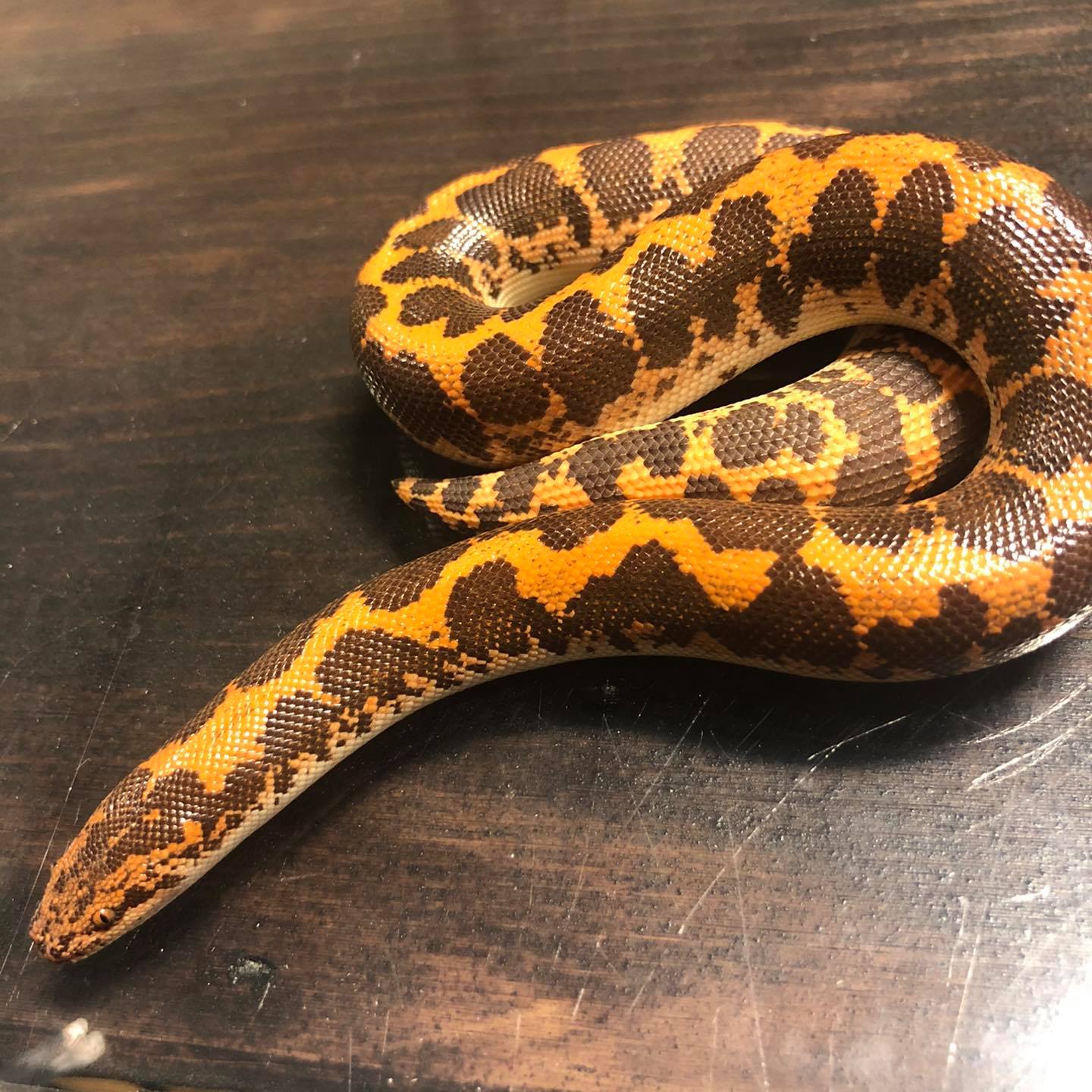
Facts:
- Scientific Name: Eryx colubrinus loveridgei
- Native to: Africa and the Middle East
- Maximum Length: Adult boas reach 2 to 3 feet long, depending on species.
- Life Span: 20+ years
Enclosure:
Baby Sand Boas can live in a 10-20 gallon terrarium, depending on the species. As the boa gets older, the enclosure should be no shorter than 1/2 the snake's length. Make sure the terrarium has a well-ventilated top. Sand Boas love to dig and bury. Substrate: Use repti-chips, Carefresh or aspen snake bedding for these boas. Do not use cedar or pine shavings or bark nuggets as they are toxic to reptiles. Habitat: Sand Boas love to dig. You can add flat rocks (resting firmly on the bottom of theterrarium, before you add substrate), fake succulent plants, and other décor and hides for the snake to explore.Temperature and Lighting:
Daytime temperatures should be around 84-90° F. Nighttime temperatures should not drop below 78° F. UVB is not a necessity for these snakes, but more information is coming to light that a 5.0 UVB will not be harmful to your boa, and could be beneficial on an 8-12 hour cycle. Use an under tank heater at all times (4-8 watt is best).During the night, use an infrared heat lamp to view your snake.
Food and Water:
Sand Boas eat rodents no larger than the snake's girth. Feed Baby Sand Boas once a week. Pinky mice and small mice are ideal meals for baby Sand Boas. The size of food needed will depend on the species of boa. It is best to feed your boa frozen/thawed rodents. For Sand Boas, you must make sure the thawed rodent is not damp as the substrate will stick on it, and the boa will eat the substrate. Most Sand Boa keepers feed their boas on a small plastic lid or plate. Providing feed on a lid prevents the boa from eating substrate and causing an impaction; potentially life-threatening. Also, a live rodent can cause harm to your boa if it tries to fight back. Please provide a very shallow dish of fresh water and make sure it stays clean with daily water changes.
Handling:
For the first day or two, avoid over handling and let them settle in the new Environment. Under handling will reduce stress on your new pet. We always recommend that after feeding to not handle your pet for at least 24 hours to allow for digestion. Avoid squeezing or dropping your snake, as this can cause internal injury.
**All information in this sheet is meant as a good start for your new snake, please also seek advice from a qualified exotic vet.
Please feel free to stop into School House Pets Enjoy your new pet, and please contact us if you have any questions.
Site by Bradley Hopkins @ SHP
